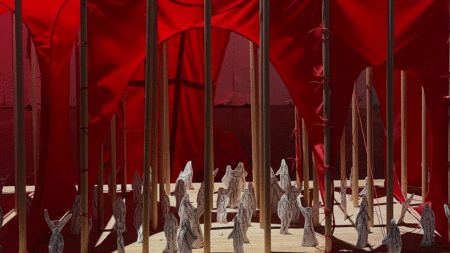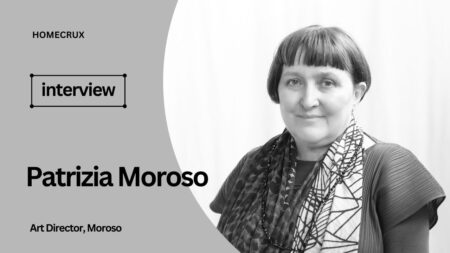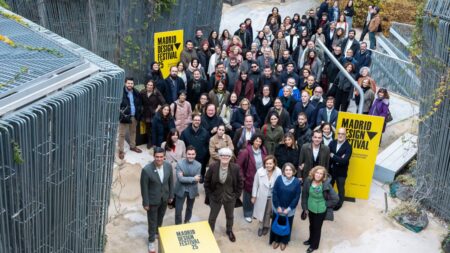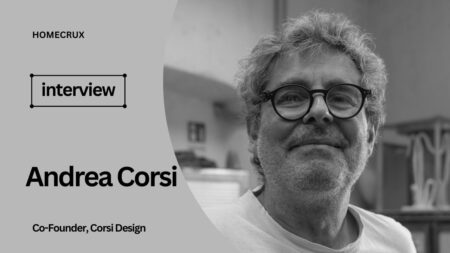The American Society of Interior Designers has been a fortifying force for interior designers for over half a century. It has not only nurtured the talents of brilliant men and women but also shown that design impacts lives and how. We got into a conversation with interior designer John Cialone, Chair of the ASID National Board of Directors, and Partner and Vice President of Chicago-based Tom Stringer Design Partners. In this conversation, Cialone talks about AI in design, the importance of wellness layouts, and the impact of design on people’s lives.
Homecrux (HC): What is your favorite thing about being an interior designer? What defines an accomplished designer?
John Cialone (JC): Being able to have an impact on people’s lives from all across the country on projects that range from contemporary to traditional is the best part. An accomplished designer puts the client first and works to create an experience unique to them.
HC: Can you tell us about your journey? Was this always for first career choice?
JC: My career spans 30 years and I started as a Student Member of ASID while attending the Art Institute of Fort Lauderdale. I studied business originally but transitioned to interior design when I realized my passion was creating unique spaces.

HC: What does The American Society of Interior Designers (ASID) do? What is your role here?
JC: I am currently the Chair of the ASID National Board of Directors. ASID advocates on behalf of interior designers across the country and is the voice of the interior design profession. The goal of ASID is to show that design impacts lives.
HC: What colors and trends do you see trending in the interior design industry in 2024?
JC: For my personal choice, I always see shades of blue being popular and are my preference but I am conscious that corals and apricots are showing up in a lot of fashion and furnishings. The more important conversation is how color affects the occupant and I see blue as soothing and works in a variety of spaces.

HC: How does Pantone color of the year affect your design work? What do you think of Peach Fuzz “the color of the year” for 2024? How is it going to pan out; or do you think other colors will form the greater part of your ideas?
JC: I am very respectful of the work that Pantone and the major paint manufacturers do to bring color trends forward. The specifics of those colors do not affect our work immediately as we tend to be focused on creating unique spaces for individual clients that frequently take many months or years to complete. I love Peach Fuzz and I will be eager to see “off the rack” accessories come in those colors.
We’re seeing these possibilities even in ASID’s research— according to the recently released ASID 2024 Trends Outlook Report, “Interior designers continue to specify neutrals in warmer tones to create a welcoming environment, but in 2024 these hues are expected to become deeper, richer, and more saturated.” That being said, we did do a kitchen in a very vibrant green reminiscent of Pantone’s 2017 color of the year called Greenery, so it can influence our work from time to time.

HC: Beyond colors, furnishing and material choice have a significant role in interior design. What are going to be the picks in 2024?
JC: Creating the experience (flow, layout, and systems) is the most important part of the design process and the decoration of the space, which includes color, furnishings, and materials is a smaller part of what we do but it’s the part that most people see and connect with. For 2024, I am seeing that people are willing to invest more in quality pieces that will last longer. I also see a continued ask for artisanal and unique pieces that have texture and feel a bit organic.
HC: How much of an impact adhering to design trends can have in transforming a space?
JC: The design trends that are important to me are about the experience created for that unique space and how the client uses what we create. I am excited to see people asking for spaces that support wellness like spa-inspired bathrooms and large convivial kitchens that allow for big groups. Both are major trends we are seeing for 2024.
Our report says, “Spa-inspired bathrooms, influenced by self-care spaces, are on the rise. We will continue to see features like frameless, doorless steam showers with rain heads, body sprays built-in seating, and curb-less entry.” On the kitchen front, it finds: “Kitchen islands have become a focal point, often acting as not only a functional preparation space but also a dining space…[and] shapes that offer side-by-side seating for easier cross-table conversation.”

HC: Which one is more fun: designing a commercial or residential space?
JC: I prefer residential work and it has been the focus of my career; however I do love a fun and exciting commercial project when it comes up and we are about to start working on a salon space for an artist’s retreat in Lake Forest, Illinois. It’s the ultimate combination of our work as it needs to meet the standards and durability of commercial work while providing a place for artists from different disciplines to come together during their multi-week stays at the retreat space.
HC: How challenging is it to work within a limited budget when designing for a client?
JC: Budgets can make a project complicated but also push our team to be super creative. We support creating a budget of any size so that we have a goal. We like to say clients hire us because we are very good at producing projects that come in on time and budget. All elements of our work have a high-low component even for the clients with the largest budgets. For me, a project that only has the best of the best with no added playful and inexpensive elements can be boring. For example, why not pair a bespoke walnut side table with a flea-market table-top accessory?

HC: What articles/things are a must-have in all your projects?
JC: Beyond the experience like good flow, amazing lighting, and mechanical systems that support a great night’s sleep and comfort, my must-haves include engaging artwork (most of the times from the client collection that we help curate for the space), cognac leather details and accents, and a bit of whimsy sometimes if only in a pillow
HC: Is AI changing your approach to design? How are you using technology to your advantage?
JC: I am not using AI in my current work beyond consulting it to sometimes craft emails. I have played with it to create unique furniture but I’m still not there yet. I am intrigued by AI but part of what makes our work special is that the design we create is individual for a particular client, at a specific time, for a unique place, and with their given circumstances. No project would ever come out the same in my mind with all of the given parameters.

HC: Can you share some tips for our readers to update their homes to stay time-relevant?
JC: Edit, edit, edit – just like getting dressed removing one thing can sometimes help unclutter and give a specific space a true focal point. Invest in quality pieces that stand the test of time and have versatility. Create punches of color and texture through accents and accessories like pillows that are easily updated when your mood strikes or when a new color inspires you. I love family photos and family photo walls are popular – invest in a great set of frames that allow you to change out photos regularly.
Follow Homecrux on Google News!




